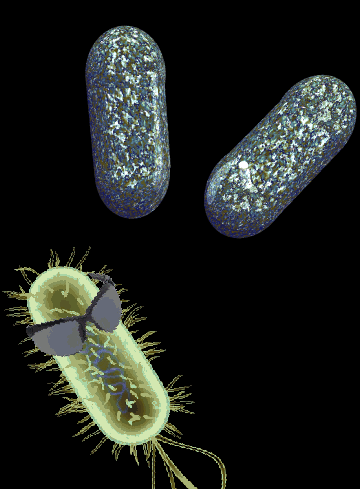Harvard drives bacteria design

In a step forward for genetic engineering and synthetic biology, researchers have modified a strain of Escherichia coli bacteria to be immune to natural viral infections while also minimising the potential for the bacteria or their modified genes to escape into the wild.
The work promises to reduce the threats of viral contamination when harnessing bacteria to produce medicines such as insulin as well as other useful substances, such as biofuels.
Currently, viruses that infect vats of bacteria can halt production, compromise drug safety, and cost millions of dollars.
“We believe we have developed the first technology to design an organism that can’t be infected by any known virus,” says the study’s first author, Akos Nyerges, research fellow in genetics in the lab of George Church in the Blavatnik Institute at Harvard Medical School (HMS) and the Wyss Institute for Biologically Inspired Engineering.
“We can’t say it’s fully virus-resistant, but so far, based on extensive laboratory experiments and computational analysis, we haven’t found a virus that can break it,” Nyerges said.
The work also provides the first built-in safety measure that prevents modified genetic material from being incorporated into natural cells, he said.
The findings build on earlier efforts by genetic engineers to achieve a helpful, safe, virus-resistant bacterium.
In 2022, a group from the University of Cambridge thought they had made an E. coli strain immune to viruses. However, when researchers sampled local sites rife with E. coli, including chicken sheds, rat nests, sewage, and a muddy river down the street from the HMS campus, they discovered viruses that could still infect the modified bacteria.
Discovering that the bacteria were not fully virus-resistant “was a bummer”, Nyerges said.
The initial method had involved genetically reprogramming E. coli to make all their life-sustaining proteins from 61 sets of genetic building blocks, or codons, instead of the naturally occurring 64.
The idea was that viruses would not be able to hijack the cells because they couldn’t replicate without the missing codons.
The HMS team, however, figured out that deleting codons was not enough. Some viruses were bringing in their own equipment to get around the missing pieces.
So, Nyerges and colleagues developed a way to change what those codons tell an organism to make - something scientists had not done to this extent in living cells.
The key lay in transfer RNAs, or tRNAs.
Each tRNA’s role is to recognize a specific codon and add the corresponding amino acid to a protein that’s being built. For instance, the codon TCG tells its matching tRNA to attach the amino acid serine.
In this case, the Cambridge team had deleted TCG along with sister codon TCA, which also calls for serine. The team had also removed the corresponding tRNAs.
The HMS team now added new, trickster tRNAs in their place. When these tRNAs see TCG or TCA, they add leucine instead of serine.
“Leucine is about as different from serine as you can get, physically and chemically,” said Nyerges.
When an invading virus injects its own genetic code full of TCG and TCA and tries to tell the E. coli to make viral proteins, these tRNAs mess up the virus’s instructions.
Inserting the wrong amino acids results in misfolded, nonfunctional viral proteins. That means the virus cannot replicate and go on to infect more cells.
Viruses, however, also come equipped with their own tRNAs. These can still accurately turn TCG and TCA into serine. But Nyerges and colleagues provided evidence that the trickster tRNAs they introduced are so good at their jobs that they overpower their viral counterparts.
“It was very challenging and a big achievement to demonstrate that it’s possible to swap an organism’s genetic code,” said Nyerges, “and that it only works if we do it this way.”
The work may have cleared the last hurdle in rendering a bacterium immune to all viruses, although there’s still a chance something will appear that can break the protection, the authors said.
The team takes confidence in knowing that overcoming the swapped codons would require a virus to develop dozens of specific mutations at the same time.
“That’s very, very unlikely for natural evolution,” Nyerges said.
The work incorporates two separate safeguards.
The first protects against horizontal gene transfer, a constantly occurring phenomenon in which snippets of genetic code and their accompanying traits, such as antibiotic resistance, get transferred from one organism to another.
For the second fail-safe, the team designed the bacteria to be unable to live outside a controlled environment, using an existing technology to make the E. coli reliant on a lab-made amino acid that does not exist in the wild.
No humans or other creatures are at risk of getting infected by “superbacteria”, Nyerges emphasised.
More details are accessible here.







 Print
Print